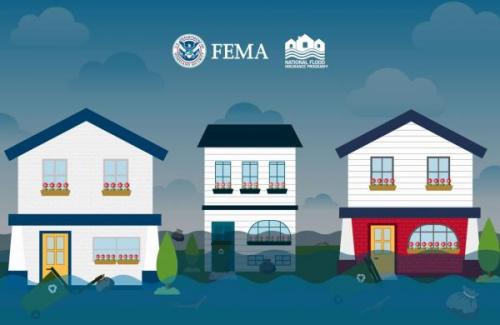Back to Basics: Understanding What “Flood” Means from an Insurance Perspective
To homeowners and renters, any standing or rising water in their homes may certainly seem like a flood. But where the water comes from and how it enters a structure are vital distinctions when it comes to insurance coverage. Understanding these nuances helps you explain the value of flood insurance and close any coverage gaps for your clients.
The National Flood Insurance Program (NFIP), defines a flood as:
A general and temporary condition of partial or complete inundation of two or more acres of normally dry land area or of two or more properties (one of which is your property) from:
- Overflow of inland or tidal waters;
- Unusual and rapid accumulation or runoff of surface waters from any source;
- Mudflow; or
- Collapse or subsidence of land along the shore of a lake or similar body of water as a result of erosion or undermining caused by waves or currents of water exceeding anticipated cyclical levels that result in a flood as defined above.
External vs. Internal Sources of Water Damage
Flooding from storm surges and overflowing rivers, streams, lakes and other water sources are covered by flood insurance -- including water released from breached or damaged dams and levees.
Water damage from a source inside a residence (like a broken pipe or water heater) may be covered by a homeowners or renters policy -- but not by flood insurance. Similarly, flood insurance wouldn’t cover damage from a sewer or drain backup in a home -- unless a flood caused that backup.
Rain vs. Wind Damage
Rain (or snowmelt) that accumulates and flows into a home is considered a flood and covered by flood insurance. However, damage from rain that is propelled into a home by winds or enters through a damaged roof is not covered by flood insurance. Such damage may be covered by homeowners/renters policies or a special wind damage rider.
Mudflow* vs. Landslide
A final important distinction is the difference between a mudflow, which is covered by flood insurance -- and a landslide, which is not. A mudflow is a river of liquid mud flowing over normally dry land as a result of flooding. Landslides, slope failures and saturated soil masses moving down a slope are not mudflows and aren’t covered by either flood insurance or standard homeowners/renters policies.
Looking for more information on the basics of flood insurance? Check out the NFIP’s resource, Answers to Questions About the NFIP.

